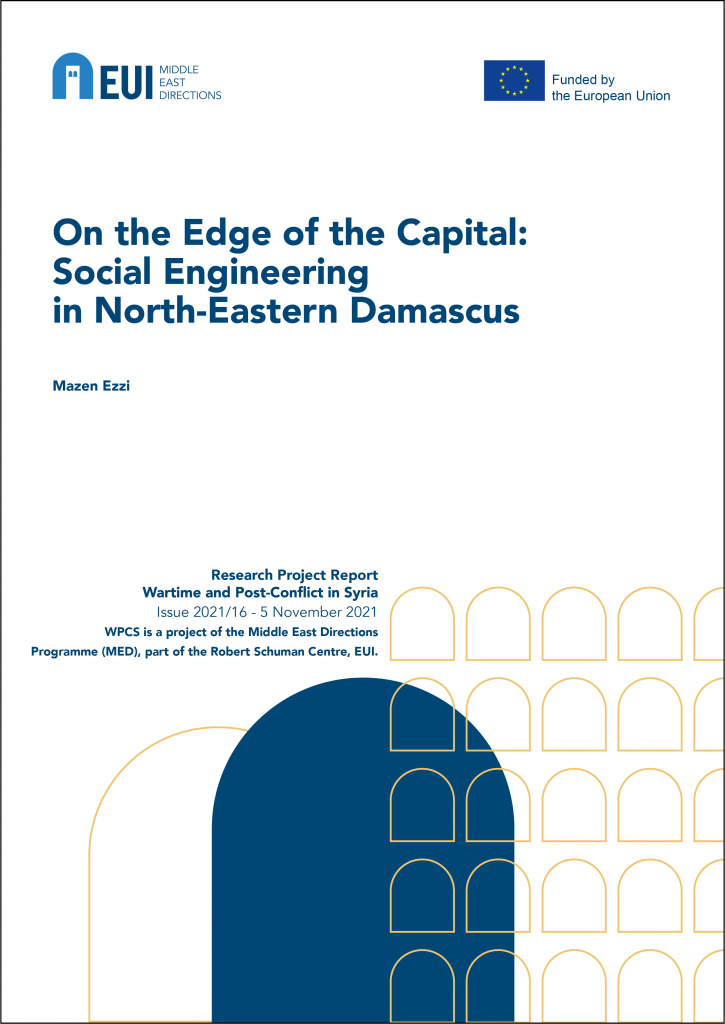MEDirections is delighted to share a new Research Project Report from the Wartime and Post-Conflict in Syria project (WPCS). This publication is available in English and Arabic.
For much of the war in Syria, the north-eastern edge of Damascus was a site of continuous armed conflict between the regime and the opposition, as well as a point of tension between Damascus and Eastern Ghouta. Throughout this period, two key dynamics shaped the area and the lives of its residents. The first was large-scale destruction and the displacement of local communities that supported the opposition and that rejected reconciliation. The second was low-intensity destruction and the enduring presence of those residents who were loyal to, or able to reconcile with, the regime. In the post-conflict era, the Damascus Governorate has reformulated its relationship with the city’s outskirts either by imposing forced zoning plans or by creating plans and freezing their implementation. Ultimately, the effects of war have merged with the governorate’s urban planning and there is now a new form of social engineering in the region.




